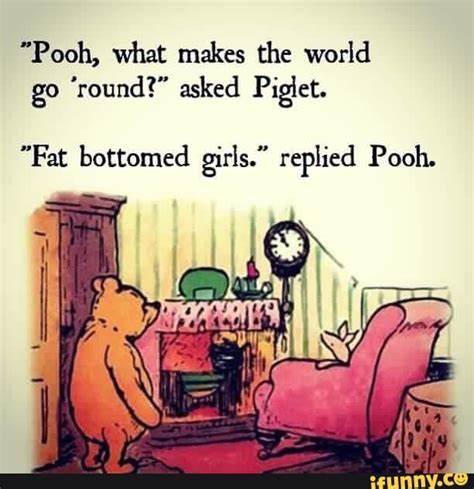- cross-posted to:
- hackernews@derp.foo
- cross-posted to:
- hackernews@derp.foo
Heat pumps can’t take the cold? Nordics debunk the myth::By installing a heat pump in his house in the hills of Oslo, Oyvind Solstad killed three birds with one stone, improving his comfort, finances and climate footprint.
Hell yeah, we’ve got a heat pump and we’re in Canada where it can get to -40°C (which is coincidentally also -40°F) and that thing works like a beast. Fortunately we also have the cheapest electricity in North America so the decision was easy.
Electricity monopoly in the US = they can price gouge, and this is literally the only reason I installed a dual fuel system with a less efficient heat pump. The Eversource electricity price hikes last year probably would have meant I couldn’t afford to heat my home in the worst parts of winter here in Massachusetts.
This is how policies are killing the planet. Socialize electric utilities, upgrade the electric grid, subsidize the use of electric heat pumps so they’re actually affordable for all end users, and of course more people would adopt them.
As it is, I run my heat pump as much as I can, which is like 9 months a year. Better than only having gas heat at least.
What’s your heat pump? I’ve been looking into them and I can’t find one that’s willing to say it works past about -15.
The Mitsubishi Hyper heat can work down to -13F, The absolutely best resource I’ve found for heat pump research is the NEEP database which will you give you actual BTU outputs at various ambient temperature readings: https://ashp.neep.org/#!/product_list/
 Also worth considering a geothermal heat pump depending on your geography, as then you have a guarantee of efficiency all year roundThanks for the website!
deleted by creator
Housing, food, car insurance and alcohol are all pretty expensive in Canada
So…living. Got it.
Cellphone plans, internet plans, seriously look into the cost of living in Canada.
Telecoms have a stranglehold here, our cell phone and internet prices are some of the highest in the world (if not THE highest).
They also own some news and media companies which only makes it harder to bring about change
Wine and cheese, damn it’s expensive compared to Europe!!!
Electricity is also pretty expensive everywhere in Canada other than quebec
Linus (tech tips) said Vancouver BC has cheap electricity bc it’s all hydro.
Yep, BC and Quebec are both hydro
https://elements.visualcapitalist.com/biggest-sources-of-electricity-by-state-and-province/
This seems accurate, but I haven’t verified
May vary by municipality but BC is the 3rd cheapest in Canada
…And it’s like 50-75% more expensive than Quebec
Manitoba has some of the lowest rates in the country
Yeah, it’s the 2nd lowest, but Quebec is still dramatically cheaper
Tim Horton. It’s cheap, but not cheap.
Can you just start saying “America” that way it includes south America and Central America, also?
When the context is involving climate, electricity rates, and money, there is little overlap between all of the Americas. It makes sense to tighten it down to the top half (more similar climates, etc) or bottom half (electricity rates for example). Canada has the wealth and the electricity rates to make heat pumps extremely viable, and for the most part climate too. The USA shares a lot of this. The Central/South Americas do not overlap like this with Canada.
It depends on the model (and the price), I’m in Québec where we have -30°C (-22F) about every winter, my heatpump is mid-range, and works fine until -20C (-4F) so 95% of the time. It is set to 23C (73F) and it’s between 21-23 everywhere in the house. The electric baseboard are set to 21C (70F) as backup.
So yeah, heat pumps can works great in winter, no problem.
Also as written in the article, with defrosting and variable speed compressors, it is very efficient. Mine is Energy Star compliant, and act as air conditionner in summer.
Makes sense to me that they could theoretically work all the way down to near 0 kelvin, just depends on their efficiency. Just so long as there is heat to be had…
Also, not sure energy star really means much.
They theoretically could, but the coefficient of performance would go below 1 long before you get close to zero Kelvin. That means it would cost more energy to pump the heat than is pumped, so you’d be better off using an electric heater.
Not to mention, you’d need a material to pump. R-32 which I believe is the most common at the moment, has a freezing temp of -132, meaning it would be useless at temps near 1K.
Ah yes… that’s a very good point. I’m not about to learn a bunch of chemistry and physics and stuff… but I’d be interested in reading about this theoretical optimization if electricity was free, there was no gravity, friction was 0, etc etc etc.
Same with EVs. Don’t work in cold weather. Except in the Nordics.
EVs work fine in cold weather. I live in Minnesota and drive an EV. It loses about 10-20% of the total range in the winter, but most of that appears to be from generating heat for the passengers.
I was being sarcastic. I’m from Germany and most “car people” constantly talk about EVs being not reliable, especially during winter …
deleted by creator
Gas cars don’t have a battery, they run on… gas
.
/s
In their defense, my German EV lost a good 40% range on the winter
That’s really bad. What brand/model?
VW ID3
Ah. The liar-company.
“Fine” is subjective. It’s fine for most people. Not so for others.
The problem isn’t that EVs don’t work in the winter, it’s that their range gets significantly reduced. We had issues with people literally up and abandoning their vehicles because their batteries ran flat.
In these cases the issue is less that the range is lost, and more that with snowy and cold weather traffic gets unpredictable. You can end up in long queues and that’s where the issues start.
When I went on a work trip up in the far north I never saw a single EV. Asked my colleagues about it and none of them thought EVs particularly feasible as a primary vehicle.
All that said, EVs work great for most people most of the time.
We had issues with people literally up and abandoning their vehicles because their batteries ran flat.
Do gas cars have infinite fuel tanks in your area?
Based on context, I’d assume that the loss of efficiency of the batteries in the cold led the vehicle to over-estimate the range of the vehicle. If the car says it has 50 miles of range and the next DC charger is 40 miles away, I could imagine a situation where I’d get 30 miles down the road before the range estimate shows that there’s actually only 35 miles of range because you wanted cabin heat.
EVs are weird in lots of ways when compared to ICE, and we’re still figuring out lots of the problems that need solving.
And the people driving them are still learning the quirks for specific circumstances. Many drivers know you need to let a fuel car warm up more or to give it extra gas in XYZ scenario, but those same people won’t always know what to do when switching to electric. Or they might instead do something that helped on a fuel vehicle, but actively harms on an electric, especially with the many manufacturer specific options that have no consistent naming. Hopefully we get some naming consistency soon, if for nothing else than ease of use.
Again, are you under the impression that gas cars don’t have the same problem?
And go ahead and ask yourself this again before submitting your next reply.
Most EVs will factor temperature and climate use in their range predictions.
If you are in a traffic jam, you lose range because of the heating. For gas cars, that doesn’t matter at all.
For gas cars, that doesn’t matter at all.
…where do you think the heat comes from in gas cars?
Electric heat doesn’t use that much energy. You can be parked for several days with the heat on in freezing weather and be fine.
A 1kw heater (less, given they’re all heat pumps these days) isn’t doing squat to the range compared to an 80kw motor.
A gas car has to idle its engine to get heat. It’s burning fuel constantly… that’s why you frequently see broken down gas cars in heavy traffic.
It’s not so much a myth as it is old information that is no longer accurate
The heat pumps that were available 20-30 years ago weren’t effective/efficienct enough at low outdoor temperatures to be practical.
Was it necessary to kill birds th?
Yes. Goddamn dinosaurs biding their time until we kill ourselves off, just to build a new golden age of dinosaurs
Birds aren’t real.
Not sure I would call this a “myth”. It’s just that technology has progressed to the point that it’s less of an issue.
Mine stopped working at 100% when it got <20*F and turned into a giant popsicle.
It never ceases to amaze me how people don’t read past the title 🤦 There are people debating about -10 to -30C when the article clearly states that it works in those temperatures. Not only does it work, it’s twice as efficient as electrical heating at those temperatures.
deleted by creator
Arrogantly uninformed. It’s an impressive combination
I just don’t buy this twice as efficient bullshit.
Do you understand how heat pumps work? The heat you’re drawing on is the the heat of the outside compartment on the outside, therefore the heat moved to the inside can be more than just the heat equivalent of the electric energy you put in. That’s how these achieve more than 100% efficiency, in general. In fact if the outside isn’t so cold outside they can achieve 300%-500%.
Now the trick to moving heat from a cold outside compartment to a warmer inside compartment lies in the compression. If you draw even a moderate amount of heat energy into your medium, then compress it, it will turn quite hot allowing you to dump heat into your warm inside compartment. Then as the medium flows out you let it expand and it turns really cold, cold enough that it can draw in heat from the cold outside. But the lower the difference in temperature of the outside air to your expanded medium gets the less heat you can transport per unit of time, that’s why we’re only looking at 200% here.
“at those temperatures”
well, to a heat pump even -40° is still 230K, which is plenty of energy to move around and work with. It may be cold to you, but to a heat pump it’s not.
So you’d rather trust your feelings? Just loon into it if you’re that skeptical.
Don’t you just love it when people decide things are true because they feel it’s true?
How is this a myth? Nobody with more than two braincells thinks that heat pump heaters don’t work in the cold.
If we start comparing everything that idiots think to a mythological mystery worthy of note, we’ll be here for an eternity.
It just comes from a fundamental misunderstanding of how the universe operates.
They say oh well it’s cold outside so how can it make it warm inside? They say this because they have absolutely no understanding of where the concept of a temperature comes from. They think that if it’s 10° outside then there is 10° of energy outside presumably out to some arbitrary distance, because some places are warmer, but they don’t really think that bit through. They don’t realise that’s not how it works.
The heat pump I just had installed in SW Ontario hands over heating duty at -10C to the gas furnace
How much did it cost and what rebates are available? I’d love to say fuck Enbridge.
$12K for the heat pump and furnace. We’re expecting a $7K rebate (did the replacement before the audit because the old furnace died)
Damn that ain’t cheap. What’s the expected savings per year in reduced gas/hydro?
Edit - how quick is it expected to pay itself off
deleted by creator
It really depends on the type of heat pump. Air-sourced heat pumps generally don’t produce heat below -30C and below -10C they generally lose enough efficiency that you’re better off using electric baseboard heating.
My air sourced heat pump keeps my house warm just fine in the Finnish winter where temperatures of -30C aren’t unheard of. I’m not exactly sure how it works, but I assume there’s coils that’ll produce the heat by electricity if nececcary, making it at worst as efficient as direct electric heating, which is what I’d use otherwise. Here like every other house has a heatpump like that and I don’t remember hearing anyone ever complaining that they’re not working.
my heart goes out to the three little birds
Better than 15 birds in 5 fir trees.
Their feathers were fanned by a firey breeze
I mean, it’s not about them not working, it’s the efficiency. Most models will switch to a normal electric heater, if they can’t extract anymore heat from the surroundings. At which temperature that happens, depends on your type of heat pump.
Not correct for modern heat pumps. They work down to at least -40F without switching to creating heat.
deleted by creator
Yeah it’s a bit shitty right now… I applied… 2k with the 7.5k grant (so the bare cost is 9.5k!). Not cost effective but… wanted to do my bit.
However, I couldn’t go ahead, it just didn’t make sense.
To get the grant all rooms must be heated, and the cost of required adaptation of my bathroom to add a radiator of the required size was somewhat eyewatering…
Heat pumps must not cool, otherwise they’re not eligible, so I’m still on the hook for AC at some point (given how hot it’s getting) which is stupid given they’re basically the same tech.
Planning rules state that heat pumps are only permitted development within a very specific set of conditions, and because of the noise they make I would have to get planning permission at my own expense (and my neighbours already complain if we talk too loud so likelihood of actually getting it very low).And, specific to the installer I was using (Octopus)…
They wanted to install a 1mx1m water tank. That won’t fit in the airing cupboard (not even close) so they suggested the kitchen… making it difficult or impossible to open the back door…
Their heat pump (daikin) is about 2m wide. My house is only 7.5m wide, you take off 1m each side for the legal thing where heat pumps have to be 1m from the neighbours boundary, space for the door, some drainage… the only position they could suggest was the middle of the back yard…Yeah that’s part of my worry, my gas boiler is 10+years old so needs replacing at some point soon, Id be up for going to a heat pump, but I don’t really have the space for it out side. Guess I might just go for a top of the line gas boiler before they stop selling them (I mean I assume they will gradually phase them out so no new installs, only replacements of existing ones, then nope) to cover the next decade and hope for some smaller units.
Hah, from Belgium I can relate with the nonsensical requirements for grants and the fact that heat pump units can be hard to install in row housing.
Sounds like the rules are stupid and only written for new construction or very deep renovations. It will almost certainly be more cost-effective to do your own thing, without government help.
I haven’t made the plunge yet, but a reversible mini-split is probably what you want. They’re much smaller, wall-mountable units that require no change to the existing heating system (and are easily DIY’d if you can run the electrical circuit yourself). You can put one ventilation box per floor, which should cover the vast majority of your heating needs. Sure, it might not have the capacity to heat your house to 20°C when it’s -5°C outside (unless your house is really well insulated), but perfect should not be the enemy of good. Not turning on the gas boiler at all on mild winter days is already a big win.
For tap water I believe there are models that have about the same dimensions as a standard water tank but with a heat pump integrated. Can’t say I looked too deep into that though.
It’s not that they can’t heat your home to 20°C in the winter on those occasions where it’s freezing outside, it’s just that the heat output decreases as it gets colder, while the heat loss of your house increase, and your size your unit(s) for a specific temperature.
Our air to air system still has a cop of just above 4 at -7°C and 3 at -15°C. It manages to heat our 1960 house just fine (decently insulated, but not to modern standards). Even on those rare occasions the temperature drops that low in Belgium, we should be fine.
In a more modern house, the system could’ve been cheaper thanks to the better insulation.
No that’s just my shitty heat pump. Sigh…
So my question with heat pumps is more how much does humidity effect the efficiency? Where I live is high elevation, has cold winters, but the air is dry as fuck. Single digit humidity for a month wouldn’t be unusual.
My understanding is that heat pumps work best with humidity since moving moisture is part of how the heat is produced. When does a reasonably priced heat pump start falling off in efficiency?
They are just AC units in reverse. The biggest effect humidity is going to have is on how much condensation is going to form on the exterior radiator. That’ll form frost that’ll have to be melted in a defrosting cycle. That’ll decrease performance and efficacy. Low humidity should keep that to a minimum.
There is a really, really big caveat here.
While all of this is true, and while heat pumps are definitely more efficient than gas/oil/electric heat, you MUST have a well-insulated home without drafts. If your home is not well insulated, or is drafty, then heat pumps likely will not keep your home at a comfortable temperature.
A standard furnace works by kicking on when heat drops below the set point of your thermostat, and then it blasts heated air until the whole space is a certain temperature above the set point on your thermostat, and then shuts off. The most efficient heat pumps are constantly trickling a little heat at a time, rather than cycling on and off. If your home is poorly insulated or drafty, then you can end up losing heat faster than the heat pump can bring it in. The better your insulation and the better sealed your home is, the better your results with a heat pump will be.
Unfortunately, my home is largely uninsulated and pretty drafty; without doing a pretty significant amount of work, at a fairly steep cost, I can’t retrofit to a heat pump.
It seems to me like you’re describing the genetic problem of having an undersized heating system, not anything specific to heat pumps. I’m positive heat pumps exist that are equal in capacity to whatever furnace you have.
It does sound like in your case improving your house’s insulation would be a better investment than installing a new heating system though.
A standard furnace works by kicking on when heat drops below the set point
So does a heat pump, and you can get Air to Water heat pumps that work almost exactly as a furnace.
The most efficient heat pumps are constantly trickling a little heat at a time, rather than cycling on and off.
Our stoker wood pellet furnace does the same if possible, it can’t go below 25% capacity, because it doesn’t burn right at lower capacities. So at certain temperatures, it maintains a steady state, but at others it has to turn on and off. A heat pump can easily do whatever is more efficient.
PS:
Heat pumps are similar technology to fridges, which also turn on and off depending on needs.
I want to understand what happens when it’s too cold out. And just running in pure air sourced HP mode, without supplemental heat.
Does it keep running at 100% but produces no heat? Limited heat? Does the house get colder and colder until everyone turns into a popsicle?
Or does it only heat the house to 18c instead of 20c?
In a climate where the low is -10c, how well does it work?


















